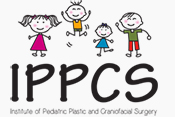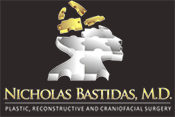Written by: Nicholas Bastidas, MD
Ear Cartilage in the Newborn
All newborns have soft, pliable cartilage that is present in their ears and noses. Over the course of 3-8 weeks the cartilage gradually hardens taking on the shape the shape at that moment in time. It is thought that circulating maternal estrogen is reponsible for making baby’s cartilage stay soft and as the estrogen dissipates from the newborns system the baby’s cartilage will harden.
We have learned from cleft surgery that noses can be molded into a more anatomic shape if intervention is started early. For this reason surgeons can apply a nasal molding appliance to push the cartilage into a better position prior to doing the cleft lip and nasal reconstruction.
Similarly, we have learned that ear cartilage can also be molded prior to the baby’s cartilage hardening. Most surgeons agree that early ear molding offers the best chance of success. Many believe 3 weeks is the optimal time to begin ear molding before the ear cartilage hardens. Other factors such as prematurity and breast feeding may also come into play by helping the cartilage maintain its pliability.
Late Ear Molding
After molding over a thousand ears i have learned that each situation is different and success can still be had in late presenting patients for ear molding (greater then 3 weeks old). We have published a study looking at older children who were treated with ear molding and have still had success in molding these babies. The journal article can be located here: https://pubmed.ncbi.nlm.nih.gov/36102908/
Success seems to be related to prolonged treatment 6-8 weeks) and maintaining the ear molding (ear well) device in place for the entire time. Certain ear deformities such as cryptotia. conceal crus and lop ear can easily still be molded in older children. In contrast, prominent ear we find to be the most difficulty to correct (even in young childen) and perhaps 2 weeks old is an optimal time to intervene.
During your presentation for ear molding, we will examine your babies ears to determine the consistency of the cartilage and apply the appropriate mold for correction. Sometimes, babies are encouraged to wear hats to protect the ear molds from inadvertent removal. We also reinforce the molds with tape to decrease the risk of them falling off from spit-up and sweat.
To summarize, ear molding can be performed even after the 3 week old mark, but early presentation is always preferred to allow significant time for Dr. Bastidas to intervene prior to your baby’s cartilage setting in its final form and position. We offer ear molding at both our New York and Long Island locations and are in-network with most major insurers. Please contact us if you would like to learn more information.




